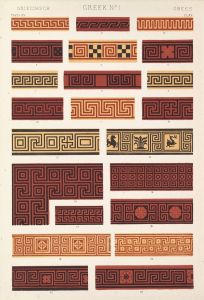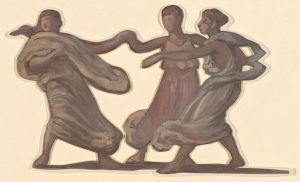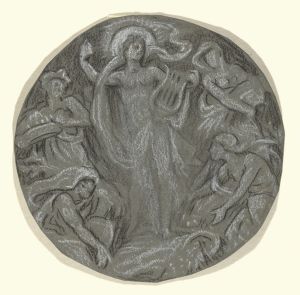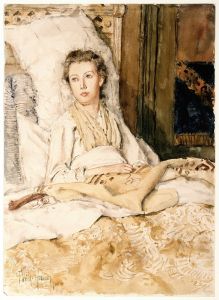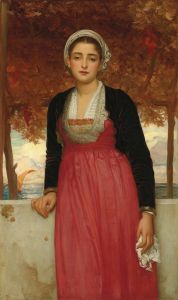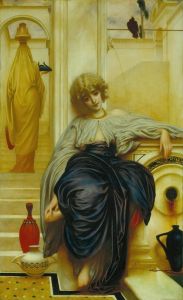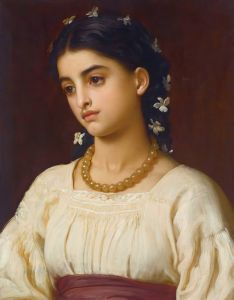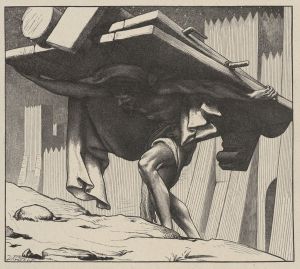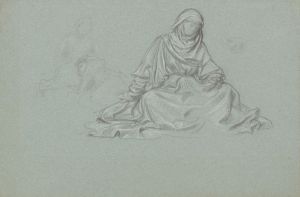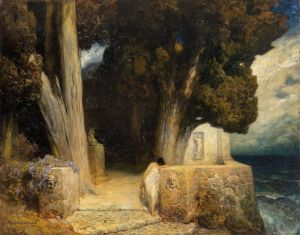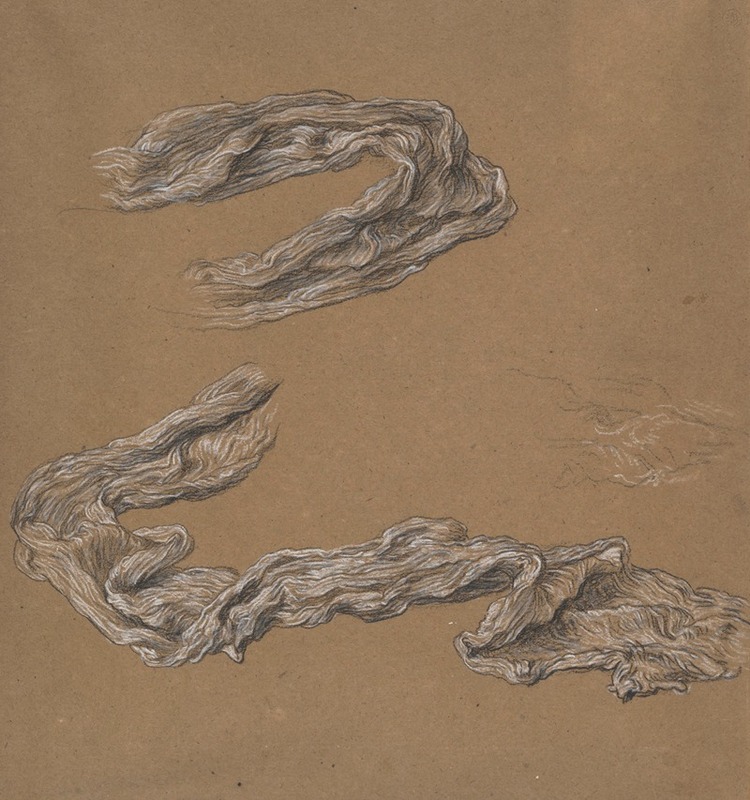
Sketch for drapery in ‘Greek Girls Playing at Ball’
A hand-painted replica of Frederic Leighton’s masterpiece Sketch for drapery in ‘Greek Girls Playing at Ball’, meticulously crafted by professional artists to capture the true essence of the original. Each piece is created with museum-quality canvas and rare mineral pigments, carefully painted by experienced artists with delicate brushstrokes and rich, layered colors to perfectly recreate the texture of the original artwork. Unlike machine-printed reproductions, this hand-painted version brings the painting to life, infused with the artist’s emotions and skill in every stroke. Whether for personal collection or home decoration, it instantly elevates the artistic atmosphere of any space.
Frederic Leighton, an eminent British artist of the 19th century, is renowned for his contributions to the Victorian art scene, particularly through his association with the Aesthetic Movement. Among his numerous works, "Sketch for Drapery in ‘Greek Girls Playing at Ball’" stands out as a testament to his meticulous attention to detail and his fascination with classical themes.
Leighton was born in 1830 and received his artistic training in Europe, studying in cities such as Florence, Paris, and Frankfurt. His exposure to the Renaissance masters and contemporary European art greatly influenced his style, which is characterized by a blend of classical idealism and modern sensibilities. Leighton’s works often depict scenes from ancient history and mythology, rendered with a focus on beauty and harmony.
The sketch in question, "Sketch for Drapery in ‘Greek Girls Playing at Ball’," is a preparatory study for a larger composition. This sketch exemplifies Leighton’s process of developing his ideas through detailed studies before executing the final painting. Such sketches were integral to his artistic practice, allowing him to explore the nuances of form, movement, and texture.
In this particular sketch, Leighton focuses on the drapery, a crucial element in his portrayal of classical subjects. Drapery in art serves not only as a depiction of clothing but also as a means to convey movement, form, and emotion. Leighton’s skillful rendering of drapery demonstrates his understanding of how fabric interacts with the human form and how it can be used to enhance the narrative of the artwork.
"Greek Girls Playing at Ball" is part of Leighton’s broader exploration of classical antiquity, a theme that recurs throughout his oeuvre. The choice of subject reflects the Victorian fascination with ancient Greece and Rome, which were seen as epitomes of beauty and civilization. By depicting Greek girls engaged in a playful activity, Leighton captures a sense of timelessness and grace, qualities that were highly valued in the art of his time.
Leighton’s sketches, including this one, are characterized by their precision and elegance. He often employed a variety of media, such as pencil, chalk, and ink, to achieve the desired effects. The attention to detail in the folds and contours of the drapery in this sketch reveals Leighton’s dedication to capturing the subtleties of light and shadow, which would later inform the final painting.
Throughout his career, Leighton held several prestigious positions, including the presidency of the Royal Academy of Arts from 1878 until his death in 1896. His influence on the art world extended beyond his own works, as he played a significant role in shaping the direction of British art during the late 19th century.
In summary, "Sketch for Drapery in ‘Greek Girls Playing at Ball’" is a fine example of Frederic Leighton’s artistic process and his commitment to classical themes. Through this sketch, Leighton not only prepares for a larger composition but also showcases his mastery of form and his ability to convey the elegance and beauty of the classical world.






